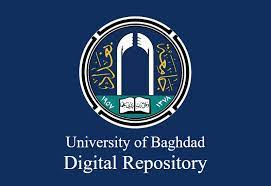The reality of sports nutritional culture and its contribution to some biochemical indicators among youth runners running distances (400, 800) and (400) meters hurdles for young
DOI:
https://doi.org/10.54702/2waqtq63Keywords:
sports nutrition culture, biochemical indicators, running (400 and 800), (400) meters hurdles.Abstract
The research aimed to identify the level of sports nutritional culture among young 400, 800, and 400-meter hurdles runners, and to identify the relationship, contribution, and impact of sports nutritional culture with some biochemical indicators among 400, 800, and 400 meter hurdles runners. Youth, the descriptive approach was adopted using the correlational method, and the boundaries of the research community were represented by young runners in the (400, 800) and (400) meter hurdles events, representing the players of the (19) Iraqi clubs, with a total number of (114) runners actually participating in the competition. The 2023 sports season qualifiers were held by the Central Iraqi Athletics Federation, from whom (50) runners were randomly selected to represent the main sample, with a percentage of (43.86%), and (30) of them were runners for foundations and scientific transactions, with a percentage of (26.316%) from their community of origin, and (10) of them were runners for the survey sample (8.772%) from their community of origin. The survey was conducted by applying the Sports Nutritional Culture Scale, measuring the metabolic rate (RMR), blood hemoglobin, and the time to which the anaerobic threshold appeared. Then, data for each runner from this sample was collected for each From the scale, tests of the three biochemical indicators, and treatment with the SPSS system, the conclusions were that young runners who ran distances (400, 800) and (400) meters hurdles need to increase their sports nutritional culture, and they need a better level, and that the culture of prevention and nutritional health awareness is better than other fields. Nutritional culture, and they need education on nutritional and weight problems more than others. Sports nutritional culture is linked, contributes, and has a positive effect on the basal metabolic rate, the time of emergence of the anaerobic threshold, and hemoglobin in the blood, among runners who ran distances (400, 800), and (400) meters hurdles among young people, and this achieves one of the sustainable development goals of the United Nations in Iraq which is (Good Health). and it was The most important recommendations are that it is necessary to pay attention to spreading the culture of sports nutrition among young runners of distances (400, 800) and (400) meters hurdles, because of its positive impact on all biochemical indicators (basal metabolic rate, time to the appearance of the anaerobic threshold difference, and blood hemoglobin.
References
- Abdel -Fattah, Abu El -Ela Ahmed, 2000. Sports and Sports Health. Cairo. Arab Thought House.
- Abdel -Fattah, Abu El -Ela Ahmed, 2012. Sports and Sports Health. 2nd edition. Cairo. Arab Thought House.
- Abu Saleh, Ali Muhammad Ayesh, and Hamada Ghazi Qassem, 2016. Health and fitness. Riyadh. King Fahd University of Petroleum.
- Al -Muhadi, Saad bin Abdullah, Al -Ota, Abdul Rahman Muhammad, 2014. Sports health nutrition awareness for primary, middle and secondary levels. Riyadh. King Saud University.
- Al -Omar, Muhammad, 2005. The comprehensive guide for proper nutrition. Baghdad. Al -Shaid Library Publishers.
- Al-Ali, Hussein Ali, and Shaghati, Amer Fakher. 2010. Strategies of sports training methods and methods. Baghdad. Office of Light.
- Al-Hamami, Muhammad Muhammad, 2000. Nutrition and health for life and sports. Cairo. Book Center for Publishing.
- El-Sayed, Aisha Abdel Mawla, 2000. Scientific foundations of nutrition for athletes and non-athletes. Nasr City. Arab House for Publishing and Distribution.
- Glossy, Kamal Jameel, 2008. Sports for non -athletes. Oman. Amman Municipality.
- Haddad, Shafiq, 2000. Nutrition guide for good health. 3th edition. Beirut. Nofal for publication and distribution.
- Hussein, Ayed Sabah, Al -Ali, Hussein Ali, 2016. Physiology and biochemical sports training. Najaf Al -Ashraf. Diaa Library.
- Ira Wolinsky & Judy A, 2008, Driskell ; Sports nutrition : energy metabolism and exercise : New York, Library of Congress Cataloging.
- Magne P, 1996. Clinical chemistry in diagnosis and treatment (6th Ed) Bath Press Co., UK.
- Mahmoud, Dania Mohamed, 2009. Encyclopedia of Nutrition.Oman. Dar Degla.
- Pickles, Jalal al-Din. 2001. Nutrition and Human Health. 4th floor. Riyadh. publishing house and distribution.
- Obaid, Liqaa.(2018). The building of the codification of the RICHTER nutrition culture sports and their contribution to some physiological indicators to young Running people in accordance with the energy systems,(Doctoral thesis).Baghdad:College of Physical Education and Sports Science from gill
- Rude R.K,1998. Magnesium deficiency; a cause of heterogeneous disease in human.J.Bone Miner Res (13).
- Saif, Abdul Rahman Abdel -Azim, 2010. Biochemical changes for athletes. Alexandria. Dar Al -Wafa for the world of printing.
- Shafiq, Muzaffar Abdullah, 2015. Sports Nutrition. Sports Science Magazine. Damascus. The Arab Federation for Sports Medicine.
- Shawky, Ahmed, 2009. Engineering the future. Cairo. Egyptian General Book Organization.
- Swartz, A. M., Strath, S. J., Bassett, D. R., Jr., O’Brien, W. L., King, G. A., and Ainsworth, B. E., 2000. Estimation of energy expenditure using CSA accelerometers at hip and wrist sites, Med Sci Sports Exerc 32 (9 Suppl),. S450–6.
- Touqan, Salma, 2000. Nutrition and Nutrition University Medical Book (athlete feeding). Beirut. Global Health Organization
- Zaher, Jaafar, 2004. The foundations of healthy nutrition. Oman. Majdalawi House.
- Mohsin, A. N. ., & Al-Selmi, A. D. H. . (2022). Physical-Nutritional program effect in women with Polycystic Ovary Syndrome (PCOS). SPORT TK-Revista EuroAmericana de Ciencias del Deporte, 11, 8. https://doi.org/10.6018/sportk.535331
Downloads
Published
Issue
Section
License
Copyright (c) 2024 Modern Sport

This work is licensed under a Creative Commons Attribution 4.0 International License.















